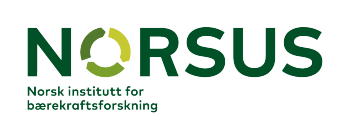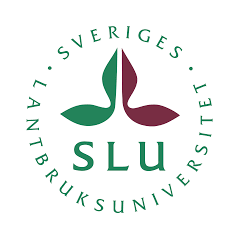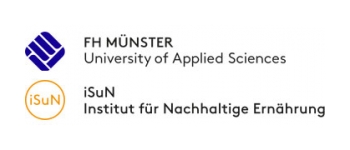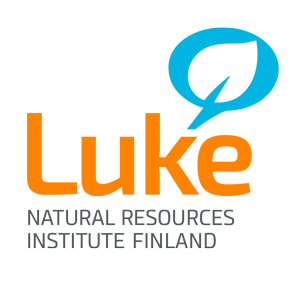National strategies
The EU has committed itself to the implementation of the Sustainable Development Goals (SDG’s). SDG 12.3 targets to halve the per capita food waste at the retail and consumer level while reducing food losses along the food production and supply chains by 2030.
In 2018, the EU revised the Waste Legislation to help achieve this target. The new directive (EU) 2018/851 includes the following:
-
Member states need to take measures to achieve SDG target 12.3
-
Food waste should be reduced by 30% in 2025 and by 50% in 2030
-
Specific food waste prevention measures must be implemented, including awareness campaigns. Consumers are to be made aware of the meaning of ‘use-by’ and ‘best-before’ dates
-
Progress in the reduction of food waste should be measured and reported annually, starting in 2020. Data from member states will first be reviewed by the commission by the end of 2023. For this purpose, a common methodology will be established.
-
Redistribution of unused food products, for example as donations, should be promoted.
-
An EU-wide Platform on Food Losses and Food Waste was published as a tool to deepen the dialogue between stakeholders.
"The following questions are intended to present the key facts about the National Strategies. As the common methodology is not in use yet, the following results for the four countries Finland, Germany, Norway, and Sweden cannot be compared."
Sweden published their national strategy: “More to Do More: Action Plan for Food Loss and Waste Reduction by 2030” in August 2018. The government assigned the task of writing this strategy to three agencies, who worked in close collaboration with relevant players from the industry. There is also a new platform for voluntary agreements on the reduction of food waste managed by the Swedish Environmental Institute.
A negotiated agreement between agencies and relevant groups and associations from the food industry was signed in June 2017. More than 100 private companies have endorsed this agreement, with requirements to monitor and report data on food waste from own business and to work for prevention of food waste. (it is possible to leave the agreement with 1 month’s notice)
The current government program sets the goal of halving food waste by 2030. There are voluntary agreements signed by players in the catering sector to reduce food waste. Food waste quantification and reporting started in Finland in 2008. Data is collected and reported by Luke (Natural Resources Institute Finland). Data collection meets the commission requirement for food waste data. Luke in close collaboration with the food industry has set up a food waste quantification system (covering the whole food chain) and is continuously improving and automatizing food waste data collection. Food waste data collection is voluntary in Finland, but the amount of food waste data reporting has been increasing over the past years.
The Federal Ministry of Food and Agriculture published a National Strategy For Food Waste Reduction, which establishes dialogue forums for different parts of the food chain. The Dialogue Forum on Retail and Wholesale as well as the Dialogue Forum on Away-From-Home Consumption have already started operating. The forums are attended by different players of the industry, actors from both research and the public sector. The goal is to reach voluntary agreements on food waste reduction and monitoring the process.
The government assigned the following agencies to publish a national strategy: The Swedish National Food Agency, the Swedish Board of Agriculture, and the Swedish Environmental Protection Agency. Players of the industry were also involved in designing the Swedish strategy.
Other agencies are partly involved:
- The Ministry of Enterprise and Innovation was part of the kick-off event in October 2017
- The Swedish National Agency for Education included a statement about food waste in the school curriculum
- The Municipalities are responsible to spread information and awareness about food waste to citizens
- The Swedish Association of Local Authorities and Regions, the Swedish Waste Management and the Recycling Association carry out regional dialogues
The negotiated agreement mentioned above is between the following business associations and ministries:
- The Ministry of Climate and Environment
- The Ministry of Agriculture and Food
- The Ministry of Children and EqualityFamilies
- The Ministry of Health and Care Services
- Ministry of Trade, Industry and Fisheries
and the following players from the food industry:
- The Groceries Sector’s Environmental Forum (DMF)
- The Grocery Suppliers of Norway (DLF)
- Food Drink Norway (NHO Mat og Drikke)
- Norwegian Hospitality Association (NHO Reiseliv)
- National Federation of Service Industries (NHO Service og Handel)
- The Norwegian Agrarian Association (Norges Bondelag)
- The Norwegian Fishermen’s Association (Norges Fiskarlag)
- Norwegian Farmers and Smallholders Union (NBS)
- The Norwegian Seafood Association (Norske Sjømatbedrifters landsforening Sjomatbedriftene)
- Confederation of Norwegian Enterprise (NHO)
- Norwegian Seafood Federation (SjomatNorge)
- The Enterprise Federation of Norway (Virke)
The Natural Resources Institute Finland Luke is responsible for creating a road map to reduce food loss and waste as well as a monitoring system to measure waste by the end of 2020. The following agencies are involved in this project:
- The Ministry of Agriculture and Forestry
- The Ministry of the Environment
- The Ministry of Economic Affairs and Employment
From the industry:
- The Finnish Food and Drink Industries’ Federation
- The Finnish Grocery Trade Association
- MaRa (the Finnish Hospitality Association) and its members
The Federal Ministry of Food and Agriculture took initiative in publishing the National Strategy and establishing the dialogue forums. The Thünen Institute was assigned to publish a baseline for food waste which makes measuring progress possible.
The National Action Plan lists several measures in different parts of the value chain that may help reduce waste. For instance, costumer behaviours as well as better date labelling, refrigeration management and the need for more research and invention are mentioned. The agencies listed earlier publish information on their websites which helps inform consumers about food waste and how to avoid it.
To meet the goal of halving food waste by 2030, Norway chooses to have the food sector implement the measures that they see fit. Companies are both implementing their own measures to reduce food waste as well as collaborating on different measures, such as the supplementary date labelling („best before - often good after“ and „see, smell, taste“) that was launched by the Norwegian food sector in 2018. This measure also reflects that, according to the negotiated agreement, the food sector is also responsible to reduce food waste at households. Due to this responsibility the retailers, wholesalers, food service- and producers finance a yearly consumer survey about causes, behaviour and attitudes related to food waste. Additionally, companies report yearly on own food waste data (tonnes and composition), implemented measures, causes of food waste as well as their utilization of food waste (donations, feed, biogas, incineration etc.) (see Report by Østfoldforskning (now NORSUS)).
Kg food waste per capita was reduced by 12% between 2015 and 2018 within the retail, wholesale and producers combined. On the way to halving food waste in 2030, there are two subgoals: food waste should be reduced by 15% before the end of 2020 and by 30% before the end of i2025, compared to the situation in 2015. For each of the named years, a bigger report on the progress will be published. The industry together with Norwegian authorities finances a website called MatVett, which is targeted towards costumers. It aims to educate and raise awareness about food waste. For example, many resources on how to properly store food and recipes for leftovers are published there.
In 2018 Luke started a project `Food waste monitoring and road map` which aim is to find best tools and measures to evaluate food waste also in food industry (Hartikainen et al. 2020, Hartikainen 2019). The measures have been chosen in close cooperation with food industry companies during 2019-2020. The road map is continuously developed and put in action in close collaboration with the food industry: https://www.luke.fi/ruokahavikkiseuranta/keihaankarjet/ (currently only in Finnish). The main themes of the road map are:
- Policy instruments
- Changing social norms
- Nudging and changing practices
- Intelligent technology and new products & business models
- Evolving research and food waste monitoring
- More together
Picture 1 demonstrates the relationships of four first themes of the road map. The other two (5. and 6.) are supportive themes. The four themes in picture 1 are in a XY-diagram, where X is socio-cultural change and Y is technological change. Measures that belong to ‘intelligent technology and new products & business models’ -theme are closer to y-axis, whereas measures from ‘changing social norms’ -theme are close to X-axis. Measures from ‘nudging and changing practices’ -topic are somewhere in between, because they require both technological and socio-cultural change. Measures that belong to ‘policy instruments’ -theme are not defined in the same XY-diagram, but they work as the pulling force for other measures to meet the target to cut food waste into half by 2030.
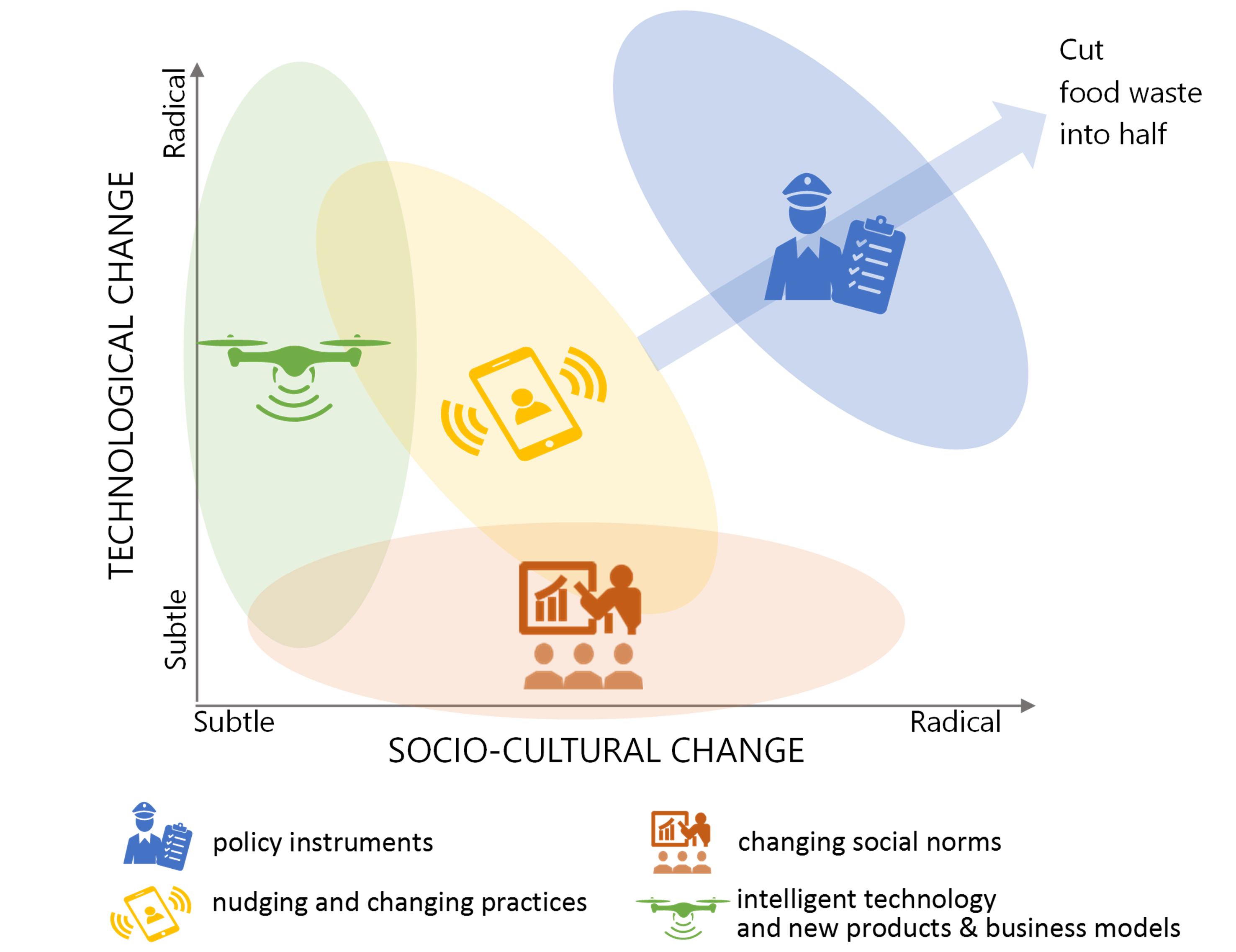
The Federal Ministry of Food and Agriculture identified four fields of action:
- Political framework
- Process optimisation in the economy
- Behavioural change among all actors
- Potential through research and digitization
The National Strategy established an overarching National Dialogue Forum for all stakeholders involved as well as dialogue forums for every step of the value chain:
- Dialogue Forum on Primary Production
- Dialogue Forum on Processing
- Dialogue Forum on Retail and Wholesale
- Dialogue Forum on Out-of-Home Consumption
- Dialogue Forum on Private Households (civil society)
Within those forums, actors from the industry, from research, public organizations and federal institutions discuss and implement measures to reduce food waste in the respective step of the food chain. All measures and results are published on the website lebensmittelwertschaetzen.de. This includes instruments like apps to help measure food waste as well as information on ongoing research projects, upcoming events regarding food waste reduction and reports on local measures, for instance in schools or canteens.
Stakeholders from the Dialogue Forum on Wholesale and Retail Trade signed a voluntary agreement to reduce food waste in June 2020. The signing companies agreed to redistribute leftover foodstuffs, for instance by giving them to charity. Furthermore, they will collect data to improve statistics on food waste. The agreement additionally lists 13 possible measures in 4 categories of which the companies agree to implement at least 4, covering all categories.
The national initiative too good for the bin! educates consumers on proper storage of foodstuffs and helps reusing leftovers by offering recipes and tips. The initiative awards projects that combat food waste each year.
Statistics Sweden monitors progress regarding the 17 Sustainable Development Goals. Specific data on food waste is still under development. Every other year, the Swedish Environmental Protection Agency publish a report quantifying the food waste from the Swedish food supply chain.
In Norway, focus has been on edible food waste since the ForMat project started in 2010. Edible food waste (“matsvinn”) include food being wasted after harvesting/slaughtering and only the edible parts, but include both food being used as ingredients in animal feed and in new non-food production processes.
The food waste within retailers, wholesalers and food producers (industry) has been measured and reported annually since 2010. This work was first initiated by the retailers and producers. And this initiative resulted in the ForMat-project, which defined a common methodology for measuring food waste. The food waste in the service sector has been mapped since 2017. This work was also initiated by the private companies. Statistics and methodology as well as tool kits for preventing food waste has been developed through the KuttMatsvinn2020 project, with more than 2300 participating organizations. The retailers, wholesalers and food producers (industry) as well as the service sector collect data this data for their field annually through Matvett, who collaborates with NORSUS on this work. The fisheries and fishing industry published their first report on food waste in 2020. The Norwegian Seafood Federation is responsible for this value chain step and collaborates with SINTEF Ocean on this work.
The primary production started measuring food waste in 2020 and will publish the first statistics in 2021. The Norwegian Agriculture Agency is responsible for this value chain step. For household food waste has been measured in 2011, 2015 and 2016. The Environmental Protection Agency (Miljødirektoratet) is responsible for data on food waste in private households, based in data collected from all Norwegian municipalities on an annual basis. Statistics Norway is responsible for compiling the data to report back to Eurostat in accordance with the new EU regulations from 31 March 2019. Norway’s latest report on food loss and waste covers the years 2015 through 2018. It was published in 2019 by NORSUS (former Østfoldforskning).
In 2018, 390 000 tonnes of food were wasted in the mapped value chain steps in Norway, representing about 74 kg edible food waste per capita. This does not include food waste from: fisheries and fishing industry, primary production, restaurants, cafes, public sector and food waste discarded in the drain at hoseholds. The food processing industry is responsible for 79 800 tonnes or 20% of Norway’s mapped food waste. Retail and Wholesale cause 16% and 1% of the mapped food waste, respectively. This equals 67 900 tonnes total. The three sectors report data as part of the agreement to reduce food waste. 17 600 tonnes or 5 % of total mapped food waste is linked to hotels, kiosks, gas-stations and canteens. Those numbers result from the project KuttMatsvinn2020. Data on the whole service sector will be published in the following years.
Private households cause 225 600 tonnes of food waste in Norway, which equals 58 % of total mapped food waste. This data stems from another report and applies to the year 2016.
The data collection is organized by Luke. Luke has quantified food waste in Finland in the entire food chain since 2008, and there have been several research projects to quantify food waste amount and improve food waste quantification practices (e .g. Hartikainen et al. 2020, Hartikainen et al. 2018, Joensuu et al. 2020, Katajuuri et al. 2014). Luke has established a standard for food waste quantification system for Finland (Hartikainen et al. 2020). Currently there are various methodologies to collect food waste data in Finland, and food waste quantification system is continuously evolving in Luke’s lead. In primary production data is based on questionnaires (farmers’ own estimates) and statistics. In food industry and retail sector the actors follow their food waste and report waste amounts in concentrated questionnaires. Food waste data is collected from hospitality sector using food waste diaries (including food waste weighting). Food waste data in households is quantified using food waste diaries, and waste composition analysis. In addition, questionnaires and interviews are used to gather qualitative data from all steps of the food chain.
One should avoid comparisons in food waste amounts between different countries because different methodologies, standards for data representativeness, and especially food waste definitions lead to significantly different results. In Finland Luke has evaluated that there is roughly 400-500 million kilos of (once) edible food waste per year, hence, excluding inedible parts such as peels and bones (Hartikainen et al. 2018, Katajajuuri et al. 2014) (Figure 2). This amounts to 75-95 kilos per Finnish citizen. However, these figures are constantly improving due to the development of the Finnish waste quantification system and more active involvement of the Finnish food chain actors to report their food waste in a more harmonized data framework.
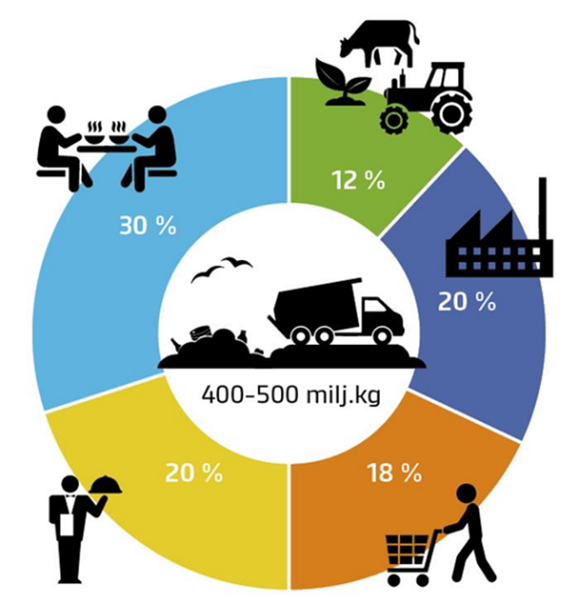
The Federal Statistical Office Destatis reports data on the SDG’s. Data on SDG 12.3 is not available yet.
In 2019, the Thünen Institute published a baseline on food waste in Germany measured in 2015. This makes measuring progress possible.The baseline estimates that 12 million tonnes of food were wasted in Germany in 2015. Of this number, 1.4 million tonnes or 12% of food was wasted during primary production. The volume was calculated by using statistical data of the Federal Ministry of Food and Agriculture on produced foodstuffs. Then, waste coefficients from secondary literature were applied to estimate the waste in tonnes in different food categories.
In the next step of the value chain, which is processing, 2.2 million tonnes of food or 18% of the total food waste have been wasted. The processing plants must publish their volume of processed food each year through the Federal Statistical Office. Again, a waste coefficient was used. This coefficient was estimated using questionnaires answered by players in the industry. 4% or 0.5 million tonnes of annual food waste was linked to wholesale and retail. The Retail Institute EHI calculated financial losses in stores due to damage or spoilage of foodstuffs. An actor from the retail industry shared data on waste volumes from 77 stores. Using both data sets, it was estimated how much food waste accrues per square meter in a store. Then, all food wasted in retail and wholesale stores was estimated.
Out of home consumption caused 14% or 1.4 million tonnes of Germany’s annual food waste. Organic waste in commercial kitchen and canteens must be measured and sent to the Federal Statistical Office. To account for food waste that is not handled as organic waste, those numbers are matched with food waste volumes calculated in secondary literature. Most of Germany’s food waste is linked to private households: 6.1 million tonnes or 52% of annual food waste was caused in private homes. The volume of overall waste in households is published by the Federal Statistical Office every year. By using data from waste sorting plants, the volume of food waste could be estimated. Additionally, the composition of household waste was checked using secondary literature like consumer questionnaires. Every year, each person living in Germany wastes approximately 75kg food.
06 December: Guideline for participation in the voluntary agreement “Reduction of food waste in the out-of-home sector”
With regard to the achievement of the German National Strategy for Food Waste Reduction, dialogue forums for different stages of the supply chain were established.
11 January 2021: Invitiation for international workshop series
What is this workshop series about?



